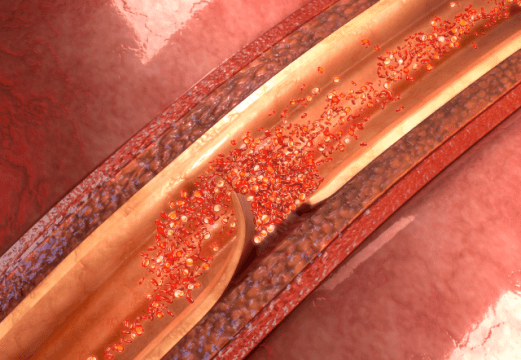The prevalence of spontaneous coronary artery dissection (SCAD) is around 4% of acute coronary syndromes (ACS). Even though the current guidelines recommend a conservative approach, as long as it is clinically viable, it remain unclear whether there are benefits to percutaneous coronary intervention (PCI) as an initial approach, to prevent disease progression and adverse events.…
Stent Thrombosis: Clinical Characteristics and Event Predictors in a Contemporary Cohort
Stent thrombosis (ST) is a serious complication of coronary PCI. However, its incidence across registries is low. It has been classified according to onset into acute (less than 24 hrs.), subacute (between 24 and 30 days), late (between 30 and 365 days) and very late (later than 365 days). The estimated incidence of ST is…
Heparin Pretreatment in STEACS Treatment: A New Old Ally?
The treatment of ST-segment elevation acute coronary syndromes (STEACS) is undoubtedly reperfusion therapy with primary percutaneous coronary intervention. Similarly, nobody doubts that the pretreatment with more stronger antiplatelet agents has a role in such a treatment. In certain sites, unfractionated heparin (UFH) pretreatment is also administered before the patient enters the cath lab; its aim…
Non-Culprit Vessel Angioplasty in the Elderly: Choosing the Right Cases Is Important
This large analysis found no benefit at a 1-year follow-up to angioplasty of non-culprit vessels in elderly patients admitted with ST-segment elevation myocardial infarction. The COMPLETE study was presented at the European Society of Cardiology 2019 Congress (and simultaneously published in NEJM) with evidence that seemed to leave no doubt regarding this issue. However, new…
Complete Revascularization after Pharmacoinvasive Strategy
Patients initially receiving pharmacoinvasive strategy for ST elevation myocardial infarction (STEMI) also presenting multivessel disease consistently benefit from complete revascularization. This benefit is similar to that of primary PCI. The COMPLETE showed that staged non-culprit lesion percutaneous coronary intervention (PCI) reduced major cardiovascular events in STEMI patients with multivessel coronary artery disease. This benefit was…
FLOWER-MI: FFR vs. Angiography for Complete Revascularization in Infarction
Functional assessment with fractional flow reserve (FFR) was not better than conventional angiography to guide complete revascularization in patients with multivessel lesions in a setting of ST-segment elevation myocardial infarction and successful primary angioplasty. These results were published in the New England Journal of Medicine (NEJM) and presented during the American College of Cardiology (ACC)…
ACC 2021 | Emergent CABG for acute MI: Benefits Despite Risk
The latest figures show a lower number of emergency CABG for acute MI, and in turn increased primary PCI. The combination of surgeons not willing to take risks and interventional cardiologists empowered to treat practically any lesion has resulted in fewer patients receiving emergency CABG. Only a few years ago, interventional cardiologists at least had…
New Unexpected Data on Non-Culprit Vessels in MI
Patients with acute myocardial infarction presenting lesions in multiple vessels is not associated with reduced infarct size in non-culprit lesions, even when functionally significant. Animal models suggest brief periods of ischemia in non-infarct territories (non-culprit) might protect culprit territory thanks to remote ischemic preconditioning. This pre-conditioning, according to this perspective, would reduce reperfusion injury and…
ST-Segment Elevation Infarction After TAVR: Problems in Every Aspect
For interventional cardiologists, treating an ST-segment elevation infarction in a patient with transcatheter aortic valve replacement (TAVR) is challenging in many ways. Longer door-to-balloon times and higher rates of primary angioplasty failure than in the general population are translated into very high short- and mid-term mortality. This multicenter study, recently published in JACC, included 118 patients…
Ticagrelor: Yet Another Pleiotropic Effect?
Studies in animals have shown ticagrelor offers better myocardial protection against reperfusion injury after ST elevation MI than clopidogrel. This had to be tested in the clinical arena, which is the aim of this study (published in JACC Intv): to assess left ventricular remodeling after reperfusion. The study included patients undergoing their first ST elevation…








